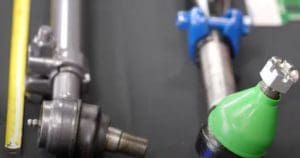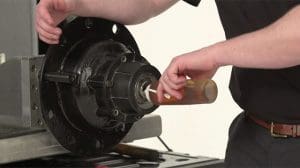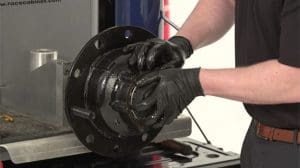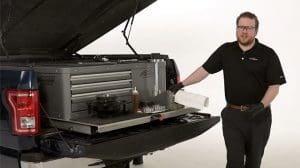When summer arrives and temperatures begin to climb, it’s no surprise that gas prices tend to follow suit. ‘Tis the season, so to speak. In fact, according to the U.S. Energy Information Administration (EIA) statistics show that from 2000 through 2022, the average monthly price of U.S. retail regular-grade gasoline in August was about 39 cents per gallon higher than the average price in January. A similar trend was observed for diesel, with prices being around 24 cents per gallon more, on average.
In the commercial trucking industry, seasonal changes can be expected. Some things will be out of your control, but the good news is there will be plenty of things you can control over the next few months to help cut back on fuel costs for your fleet.
Maintenance and Fuel Efficiency
We can’t emphasize this point enough: staying on top of your routine maintenance schedules will ensure your trucks hit the road with optimal engine performance. When you consider drivers will likely have more trips and more miles to cover during summer, this tip alone can be worth its weight in gold (or oil, to be more accurate) if followed closely. So make sure you keep an eye on tire pressures, oil levels, air filters, and general tune-up schedules this summer. Running your fleet at peak performance will help save you money in both the short and long run. To help you do this, we recommend two key maintenance tips to consider in the months ahead.
Wheel Bearing End Play
First, one of the easiest ways to cut your fleet’s cost per mile is by torquing wheel ends to proper specifications. Wheel end endplay targets are .001-.005, or slight preload. Thinking in terms of 10 wheel positions on a tractor trailer combination, or 20 or more in Michigan, if wheel end adjustments are in excessive preload, it forces the engine to work harder, using more fuel and diminishing fuel economy. So while we might not be able to adjust the pricing on diesel fuel, we can monitor our end play adjustment procedures.
Tire Inflation
Secondly, it’s helpful to remember that the most controllable expense for a fleet is maintaining correct inflation levels in your tires. It’s a fact that a properly inflated tire will increase the mpg of any vehicle. Semi tires with a target psi of 90-110 will lose or gain 1-2 psi for every ten degrees of temperature change. So, it’s very important to check the cold tire pressure of tires on a regular schedule. Additionally, it’s just as important to check the tire pressure on trailers that have an automated tire inflation system. Tire inflation systems must still be maintained, and tire pressure accuracy should also be checked on a regular basis. With something so important, you can’t just “set it and forget it.”
Developing Fuel-Efficient Practices
Drivers have an important role to play when it comes to fuel consumption. There’s a direct relationship with what happens behind the wheel and what takes place under the hood. Here’s a few practical steps that drivers can take to help boost overall fuel economy.
First, pay close attention to driving routes. Efficient route planning is one sure way to guard against wasted fuel or extra miles driven. Whether you choose GPS technology or opt for more specialized route optimization software, do your due diligence in planning ahead to ensure you conserve fuel and minimize any delays along the way.
Another way that companies develop healthier driving practices is by setting policies in place that encourage fuel efficiency and conservation. Smart driving techniques, such as maintaining a consistent speed, reducing idling time, and practicing anticipatory driving all contribute to the bigger picture when adding up expenses. And remember, the same goes for your freight. Measures like capping your freight with load limits is another option that fleets use to promote safe travel while protecting the bottom line.
Using Smart Data & Technology
Automated data management systems are smart tools that help keep track of driving behaviors and vehicle mileage. With this information, fleet managers can give specific and personalized advice to each driver on how they can improve their driving habits.
This data is also useful for managing maintenance schedules more effectively. This helps prevent breakdowns and reduces the chances of any unexpected problems while on the road. For example, our STEMCO Vehicle Technology (SVT™) products use smart technologies to help make data-driven decisions that simplify maintenance procedures and improve overall fleet safety.
The current lineup of mileage solutions products with SVT give fleet managers a complete picture of their fleet’s fuel mileage and overall efficiency. This allows the ability to track and manage fleet mileage while receiving critical fuel-usage information, an efficient method to reduce vehicle maintenance costs and increase fleet safety.
Providing Training and Incentives
When you’re informed, you can make better decisions. That’s why at STEMCO, we believe that proper training is imperative in Making the Roadways Safer.
On the topic of fuel consumption, it’s common for fleets to provide training or incentive programs for drivers to help reduce fuel costs and operational expenses. It’s all about raising awareness. Training allows drivers the opportunity to truly understand how practices like idling, improper shifting, aggressive driving, and poor route planning can drastically reduce your fleet’s overall fuel economy. When you know better, you can do better. It’s just that simple.
Don’t let the busy roads and higher gas prices get you down during the summer. Keep fuel efficiency as your fleet’s top priority. Smart data can help get you there, but so can practical steps like keeping up on routine maintenance, developing fuel-efficient driving practices, and providing high-quality training for your drivers.
If you have additional questions, don’t hesitate to contact us.









